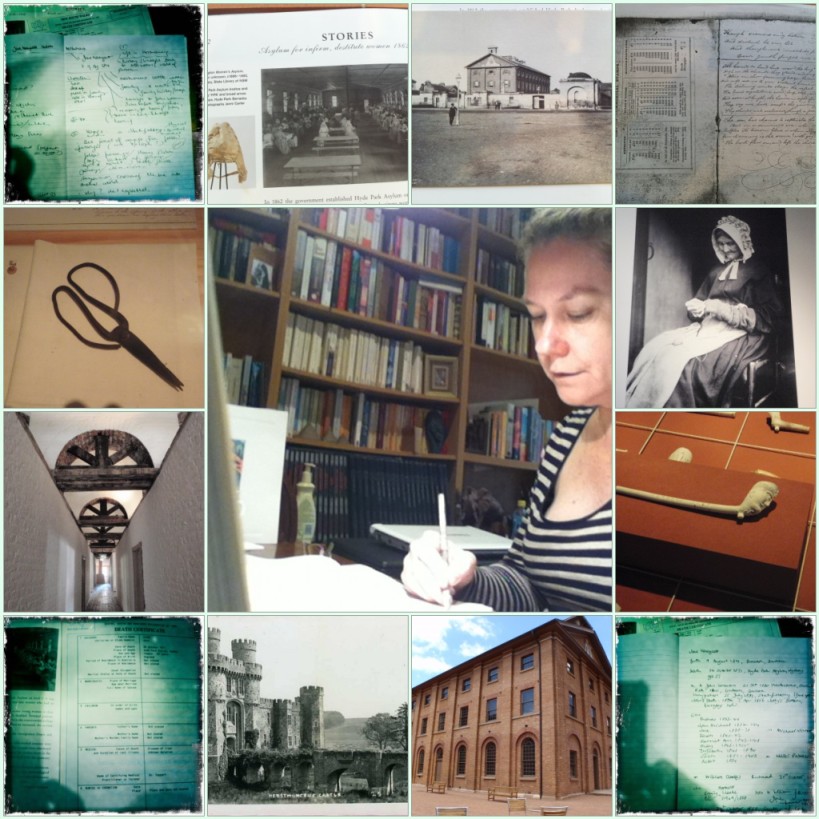‘Fierce on the Page: Become the writer you were meant to be and succeed on your own terms’ by Sage Cohen, Writer’s Digest Books

I first came across Sage Cohen through her book Writing the Life Poetic which focuses on building poetic voice and putting poetry back into our everyday lives. I also had the opportunity of working on my poetry through Sage’s online classes a few years back. From these experiences, I come to Sage’s works on writing with high expectations of both a pleasurable reading experience and wise, practical advice.
And I am never disappointed. ‘Fierce on the Page’ is a rare and rich read, structured as a series of 75 reflective essays that offer strategies, perspectives and practices to encourage ferocity in writing and in life.
Sage defines ferocity and the fierce writer in her introduction:
The fierce writer ensures that the time and energy she invests in her craft pays dividends of insight and evolution. The fierce writer discovers how to come into his alignment with his authority, leverage his interests, and honour his rhythms, to become the truest instrument of his craft.
From page one of the first essay, ‘You Are Your Best Expert’, I was lulled by Sage’s reassuring voice telling me stories and building on these to make connections. The essays provide a path to navigate the way into writing and into progressing through many aspects of its craft and life.
Each contemplative essay is so thought-provoking. My copy is now full of underlining, connections and possible creations sparked by the reading experience. Sage’s practical business writing background is also woven through the pages. There is a blend of wisdom honed from writing experience of all kinds, along with a grounded sense of what works to bring forward new possibilities and how productivity can be enhanced.
Some of the key strengths of ‘Fierce on the Page’ for me are:
- Its associative approach: There is an energy of association underlying each essay. An anecdote or story is told or an experience recounted. These reflections then form the basis of the essay. It’s an evocative reading experience as you are folded into each idea and its applications evolve. This associative approach lends a wise felt experience that makes it easy to engage on a very deep level.
- The structure of each essay: Each essay builds from its opening to a realisation or discovery and then a practical application. From there, we are given suggested strategies to apply and questions to dive into to enable us to ‘be fierce’ in our writing endeavours. Woven into this are quotes and references from other creatives that provide prompts and shifts to our perspective.
- The poetic language of discovery: As each essay reaches moments where the connections and realisations are crystallised, the language likewise reaches a quiet crescendo of feeling. The learning is expressed sensitively and enacted directly, as with the language of poetry. The images and associations created from this narrative approach make the reading experience lived and heartfelt.
For example, in ‘Write Your Manifesto’, essay #55:
I have come to accept that the writing life is expansive enough to hold my many refractions, and that these add up to the whole of what I have to give.”
In ‘A Bug’s Life, A Writer’s Life’, essay #58:
When you are at an impasse of transition, and your next steps are unclear, follow the words. Trust the words. Trust the cliffs, the canyons, the face flowers. Trust your disorientation and your sense of direction. Trust what you find and don’t find. The shadow gives shape to light. These are your stories. The dance of interdependence is a hum of words.
In ‘Get to the Place of Grace’, essay #63:
Whatever it means to you in your life and your writing, be on the lookout for that lift-off in your words and that landing in your being. Hone your attention to the place of grace where you can feel, know and trust that you and your piece of writing have completed your journey.
Sage’s reminds us that: ‘You have everything you need—and you are everything you need—to do the writing you want to do’. These words provide the gentle encouragement many of us need to begin, to continue or to start up where we left off.
I encourage you to seek out the wisdom and practicality of ‘Fierce on the Page’ as a support in engaging in quiet, resilient writing and in succeeding in where you want to be in your writing. Sage’s books are always on my desk as talismans of encouragement and practice. This special book will stay close at hand, gaining more comments and underlining over the years, as I seek to apply its messages and be fierce with my own writing and life.

Thought pieces:
You can visit Sage Cohen’s Fierce on the Page website for more information including a community page to share thoughts from the practical exercises in the book.
The interview Mantu Joshi on Writing and Living Fierce is an inspiring example and shows the power and outcomes that can come from living out fierce and committed writing strategies. In this case, it resulted in a book on resilient parenting, written two hours a week over two years.
Other books on writing by Sage Cohen that I recommend are:
Writing the Life Poetic – an invitation to read and write poetry; fabulous for re-engaging with the spirit of poetry in your life.
The Productive Writer – practical strategies and thought processes to increase your productivity and move from ideas to action and outcomes in your writing life. I’ve written a book review of The Productive Writer which you can find here.






